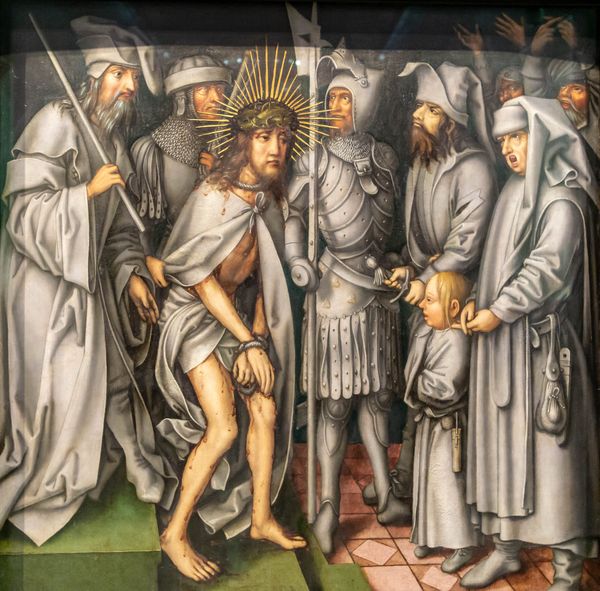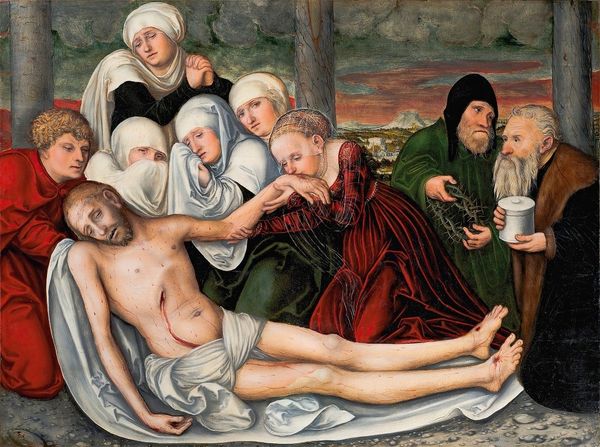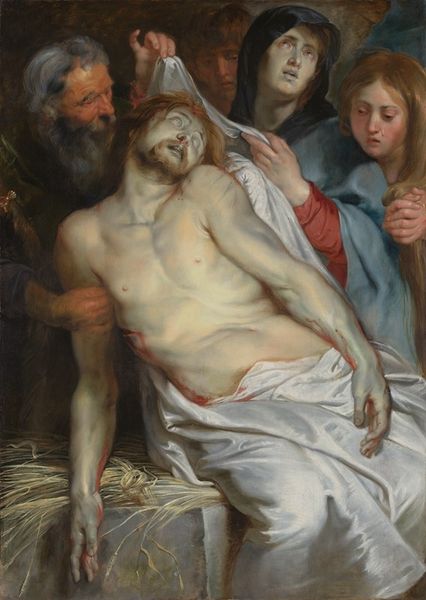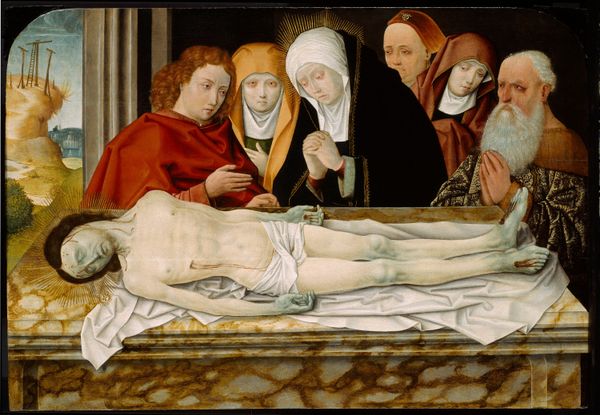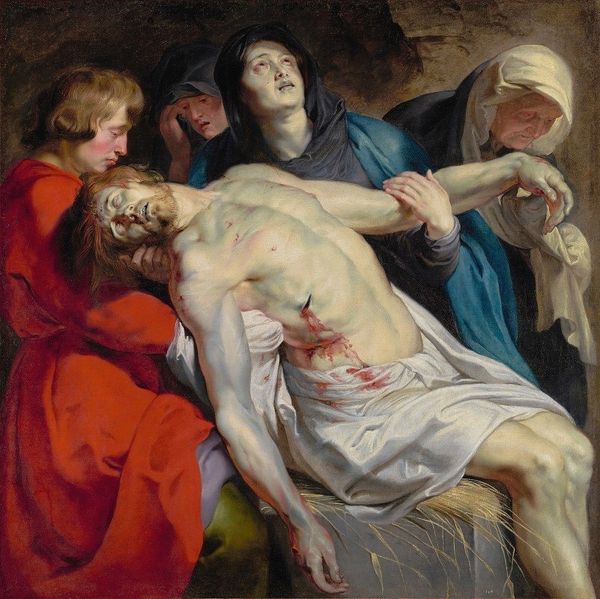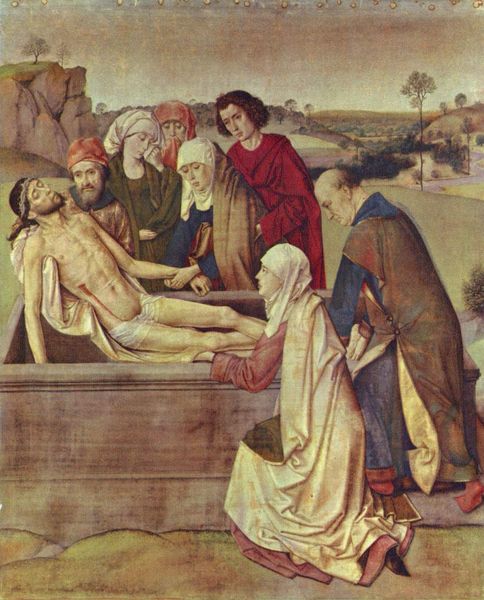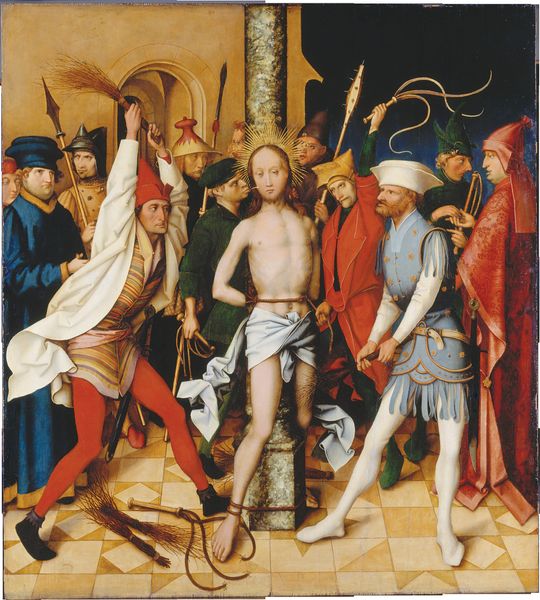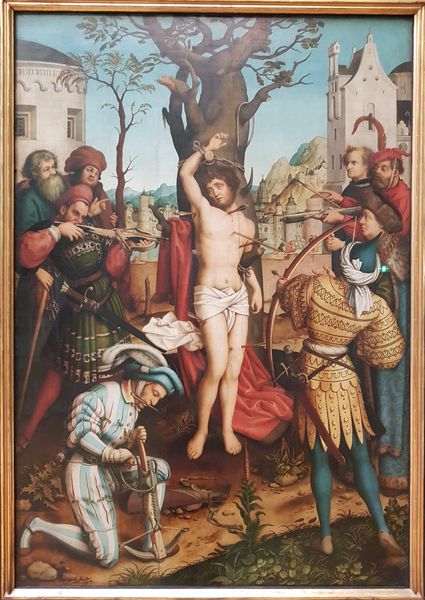
Descent from the Cross (Grey Passion-10) 1500
0:00
0:00
hansholbeintheelder
Staatsgalerie Stuttgart, Stuttgart, Germany
painting, oil-paint
#
medieval
#
narrative-art
#
painting
#
oil-paint
#
figuration
#
oil painting
#
mythology
#
history-painting
Copyright: Public domain
Curator: Here we have Hans Holbein the Elder’s "Descent from the Cross," an oil painting completed around 1500. It’s part of a series, often called his “Grey Passion,” housed right here in the Staatsgalerie Stuttgart. Editor: It’s stark, isn’t it? The figures, mainly in these muted whites and grays, evoke such solemnity. A quiet tragedy hangs in the air. Curator: Indeed. Holbein's choice of a near-monochromatic palette, except for Christ’s wounds, was somewhat unconventional for the period. It lends the scene a grave, almost austere quality. The series was commissioned, we believe, for a Dominican monastery, so this restraint served a didactic, spiritual purpose. Editor: The imagery certainly emphasizes sacrifice. Note the skull and bones at the base of the cross—the ever-present *memento mori*. Even the ladder is intriguing, hinting at the means of Christ's removal and a possible symbolic bridge between earthly and divine realms. Curator: The social aspect to be sure. The painting powerfully conveyed both grief and dogma for its intended audience. The Descent was not merely a depiction of sorrow but a critical reminder of Christ’s sacrifice for the redemption of mankind, vital for monastic contemplation and teaching. Editor: The halos are curious, aren’t they? More like radiating lines than traditional solid forms; there’s something ethereal about them. They emphasize the figures' holiness, yet without ostentation. Curator: Right, there's a delicate balance here, particularly when we see how the artist captured the emotions etched on the faces—a complex rendering for the early 16th century. What strikes me most, considering the history, is how immediate the scene feels. Editor: Yes, beyond the religious context and period conventions, the palpable expressions of grief cut through time. It speaks to a timeless human experience. I think what resonated with me most is its simplicity. Curator: Agreed, a profound work whose strength lies in Holbein's expert blend of impactful symbolism and humanism, and what a unique position the artist played at that transition of medieval devotion into humanism in art.
Comments
No comments
Be the first to comment and join the conversation on the ultimate creative platform.

